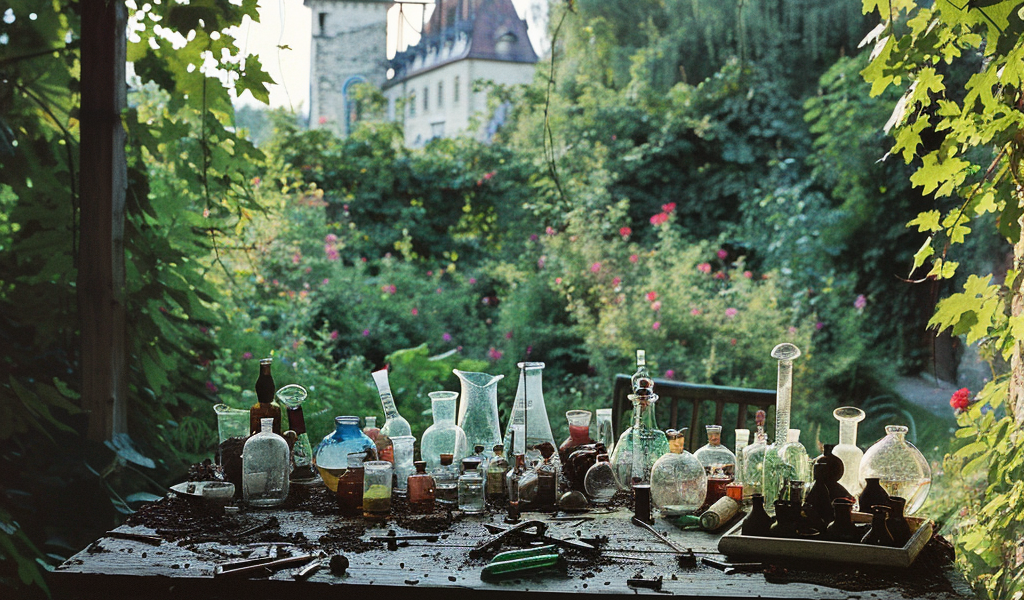In a groundbreaking discovery, researchers have shed new light on the alchemical practices of the renowned Danish astronomer Tycho Brahe, whose contributions to science in the 16th century have long been celebrated. While Brahe is primarily known for his astronomical observations made without the aid of a telescope, his lesser-known role as an alchemist has captured the attention of scientists and historians alike. His alchemical lab, situated beneath his castle, Uraniborg, on the island of Ven in Sweden, has been the subject of intrigue and speculation for centuries.
Uraniborg, built in the late 16th century, was not only an observatory but also a hub for Brahe’s alchemical experiments. The castle was surrounded by lush gardens, which added to its mystique. However, following Brahe’s death in 1601, the site was demolished, leaving behind only fragments of its rich history. The clandestine nature of alchemical practices during the Renaissance meant that much of Brahe’s work remained a mystery, with only a handful of his recipes surviving the test of time.
Recent scientific endeavors have aimed to unravel some of these mysteries. A team of researchers conducted a detailed chemical analysis of glass and pottery shards unearthed during archaeological excavations at the Uraniborg site, which took place between 1988 and 1992. These shards, believed to originate from Brahe’s alchemical lab, have provided new insights into the materials and elements he may have worked with.
The lead researcher, Kaare Lund Rasmussen, a professor emeritus at the University of Southern Denmark, was prompted to investigate these shards after contemplating their potential to reveal secrets of Brahe’s alchemical practices. Collaborating with Poul Grinder-Hansen, a senior researcher and museum curator at the National Museum of Denmark, Rasmussen’s team focused on the elemental composition of the shards.
In their findings, published in the journal Heritage Science, the researchers reported that four of the five shards contained unexpectedly high concentrations of various elements, including nickel, copper, zinc, tin, mercury, gold, and lead. The presence of these elements suggests that Brahe’s alchemical pursuits were more complex than previously understood.
Among the elements, gold stood out as particularly significant. Rasmussen noted that his ongoing research into the circumstances surrounding Brahe’s untimely death in 1601 has led him to associate gold with the astronomer’s alchemical endeavors. The discovery of gold and other heavy metals in the shards raises questions about the types of experiments Brahe was conducting and the potential applications of his findings.
The alchemical practices of the Renaissance were often shrouded in secrecy, with practitioners guarding their knowledge closely. This historical context makes the analysis of Brahe’s laboratory remnants particularly valuable, as it offers a rare glimpse into the materials and techniques employed by one of the era’s most prominent scientists. The presence of diverse elements in the shards suggests that Brahe may have been experimenting with a variety of substances, potentially aiming to create new compounds or medicinal preparations.
As researchers continue to explore the remnants of Brahe’s alchemical lab, the implications of their findings extend beyond mere historical curiosity. Understanding the elements that were present in Brahe’s laboratory could provide insights into the scientific practices of the time and the evolution of chemistry as a discipline. Furthermore, the study of these artifacts contributes to a broader understanding of how alchemy laid the groundwork for modern scientific inquiry.
The ongoing research into Brahe’s alchemical practices serves as a reminder of the intricate connections between science, history, and the quest for knowledge. As scientists delve deeper into the remnants of the past, they not only uncover the secrets of individual figures like Brahe but also illuminate the broader narrative of human discovery and innovation.
With the recent findings, the legacy of Tycho Brahe continues to evolve, revealing new dimensions to his contributions to both astronomy and alchemy. As scholars and scientists work to piece together the puzzle of his life and work, the allure of Uraniborg and its mysteries remains as captivating as ever.





